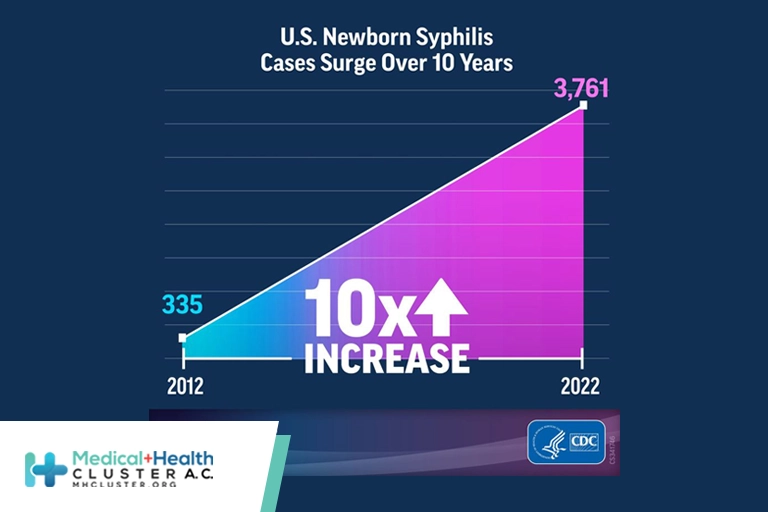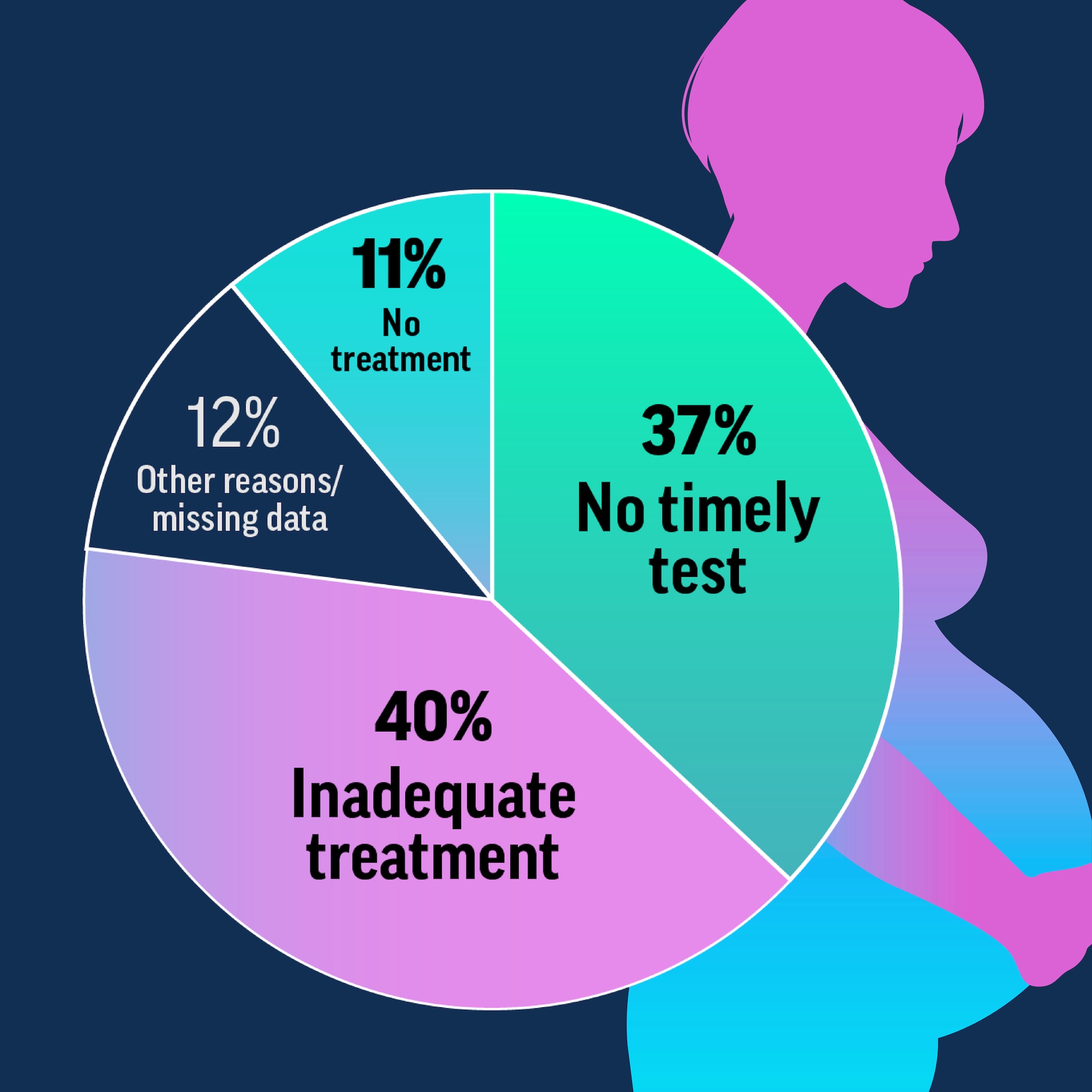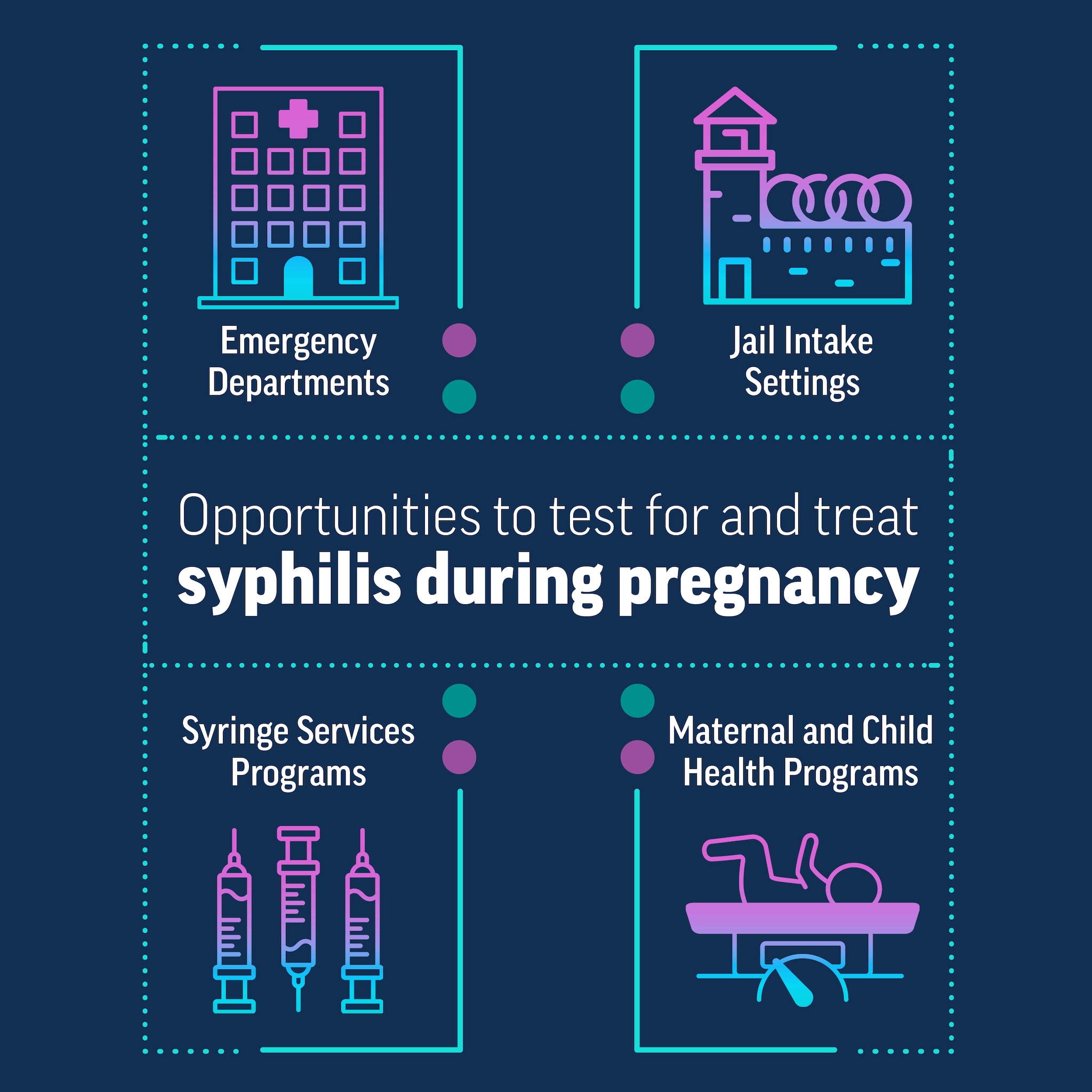En atención a la creciente preocupación sobre la confianza en...
Leer más
Syphilis in Babies Reflects Health System Failures

Tailored strategies can address missed prevention opportunities during pregnancy
10x
9 in 10
2 in 5
The number of babies born with syphilis is surging
The number of babies born with syphilis in the United States is increasing at an alarming rate. Increased and innovative syphilis testing and treatment can reduce the number of babies born with syphilis and improve health during pregnancy. There were more than 3,700 babies born with syphilis in 2022, over 10 times the number reported in 2012. These increases reflect overall increases in syphilis among women of reproductive age.
People can experience illness and pass syphilis to their babies during pregnancy. Miscarriage, stillbirth, severe lifelong health problems, and even newborn death can result from syphilis infection during pregnancy. In 2022, there were 231 stillbirths and 51 infant deaths.
Increasing rates of syphilis among babies reflect a failure of the U.S. health system. Testing for and treating syphilis during pregnancy more than 30 days before delivery can prevent this infection in newborns. Too many people are not being tested and treated early enough during pregnancy.
Challenges
Missed opportunities during pregnancy can have tragic consequences
- Babies are born with syphilis when people are tested too late and not treated properly during pregnancy. Timely testing and treatment during pregnancy can help keep people healthy and might have prevented 9 out of 10 newborn syphilis cases in 2022.
- Late testing and treatment happen for different reasons depending on individual- and system-level barriers to care. Individual-level barriers include substance use disorder and lack of insurance. System-level barriers include systemic racism and limited healthcare access. Medication shortages now also threaten effective care. There is no one-size-fits-all solution to addressing these barriers. Knowing the data is critical for tailoring approaches.
- People are not always getting prenatal care. Two in 5 cases of babies born with syphilis happened in people who did not receive any prenatal care.
Over 10 Times as Many Babies Were Born with Syphilis in 2022 than in 2012
Increasing rates of syphilis among babies reflect a failure of the U.S. health system.
Timely Syphilis Testing and Treatment During Pregnancy Might Have Prevented Almost 90% of Cases
Newborn syphilis happens when syphilis is not identified and treated properly during pregnancy.
Any Healthcare Encounter During Pregnancy Is an Opportunity to Prevent Newborn Syphilis
Many settings provide opportunities to test for and treat syphilis during pregnancy.
What Can Be Done
To Prevent Newborn Syphilis
Source: https://www.cdc.gov/vitalsigns/newborn-syphilis/index.html?fbclid=IwAR1-LeuR4TByXUTNe2G_ql_-TUbG2UoZOpj_Q20vlc3LpU_4vky04i78TuY







